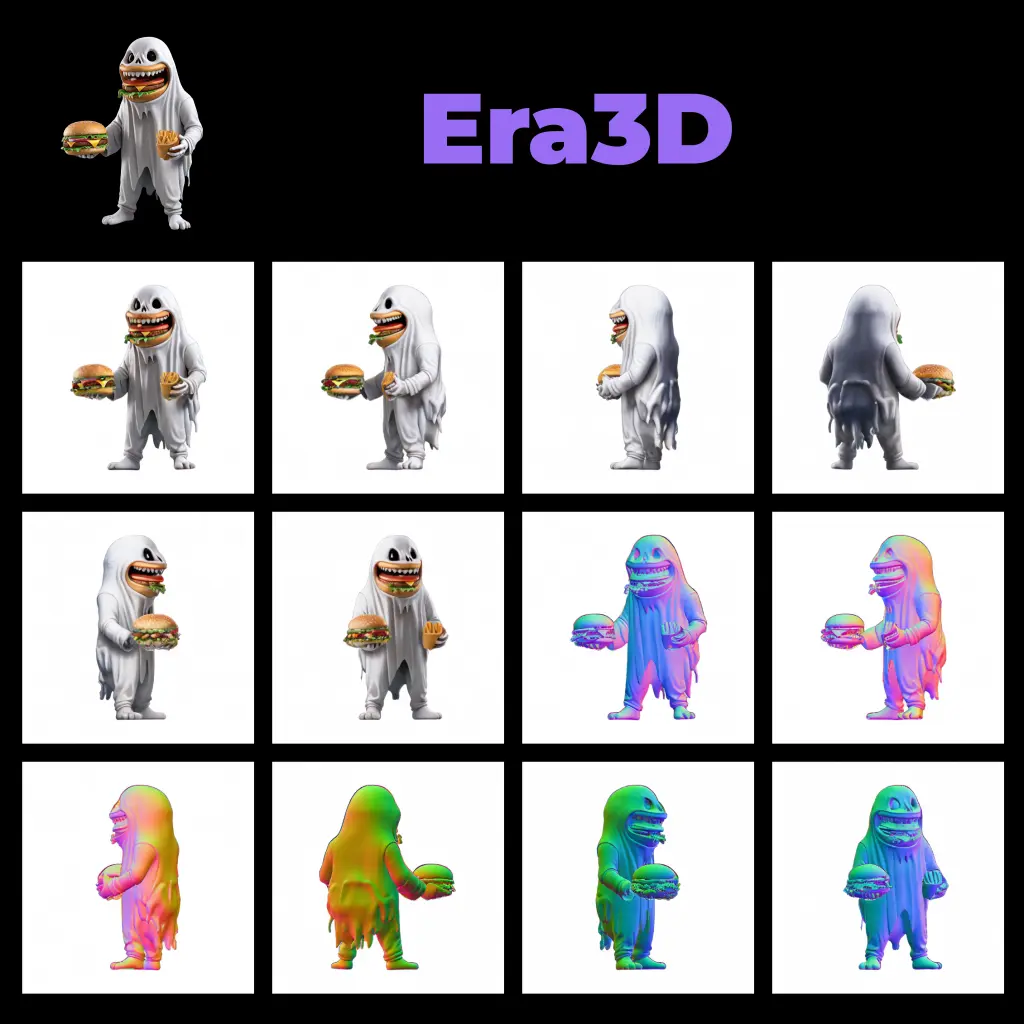ComfyUI Node: Gradient Edit
DM_GradientEdit
CategoryDareMerge/gradient
54rt1n (Account age: 4335days) Extension
ComfyUI-DareMerge Latest Updated
2025-03-27 Github Stars
0.08K
How to Install ComfyUI-DareMerge
Install this extension via the ComfyUI Manager by searching for ComfyUI-DareMerge- 1. Click the Manager button in the main menu
- 2. Select Custom Nodes Manager button
- 3. Enter ComfyUI-DareMerge in the search bar
Visit ComfyUI Online for ready-to-use ComfyUI environment
- Free trial available
- 16GB VRAM to 80GB VRAM GPU machines
- 400+ preloaded models/nodes
- Freedom to upload custom models/nodes
- 200+ ready-to-run workflows
- 100% private workspace with up to 200GB storage
- Dedicated Support
Gradient Edit Description
Modify layer gradients in AI models for precise control and adjustments, enabling various operations for enhanced art quality.
Gradient Edit:
The DM_GradientEdit node is designed to modify layer gradients within your AI models, providing you with the flexibility to fine-tune and adjust gradient values to achieve desired effects. This node allows you to perform various operations on gradients, such as setting, adding, subtracting, multiplying, or dividing values. By enabling these operations, DM_GradientEdit helps you control the behavior and performance of your models more precisely, enhancing the quality and specificity of your AI-generated art. This node is particularly useful for artists looking to experiment with different gradient manipulations to see how they impact the final output, offering a straightforward way to make these adjustments without needing deep technical knowledge.
Gradient Edit Input Parameters:
gradient
This parameter represents the layer gradient that you want to edit. It is the primary input for the node and serves as the base upon which all operations will be performed. The gradient is a crucial component as it influences the model's learning process and output quality.
operation
This parameter specifies the type of operation to be performed on the gradient. The available options are "set", "add", "subtract", "multiply", and "divide". The default value is "set". Each operation modifies the gradient in a different way: "set" assigns a new value, "add" increases the gradient by a specified amount, "subtract" decreases it, "multiply" scales it, and "divide" reduces it by a factor. Choosing the right operation can significantly impact the model's behavior and results.
value
This parameter defines the numerical value to be used in the specified operation. It is a floating-point number with a default value of 0.0, a minimum value of 0.0, and a maximum value of 1.0, with increments of 0.01. The value parameter allows you to control the intensity of the operation applied to the gradient, providing fine-grained control over the modifications.
layers
This parameter is a string that specifies which layers of the model the gradient operation should be applied to. It supports multiline input, allowing you to list multiple layers. By targeting specific layers, you can focus the gradient modifications on particular parts of the model, enabling more precise and effective adjustments.
Gradient Edit Output Parameters:
gradient
The output parameter is the modified layer gradient. This gradient reflects the changes made based on the specified operation and value, applied to the designated layers. The modified gradient can then be used in subsequent nodes or processes, allowing you to see the impact of your adjustments on the model's performance and output.
Gradient Edit Usage Tips:
- Experiment with different operations and values to see how they affect the model's output. Start with small changes to understand their impact before making larger adjustments.
- Use the layers parameter to target specific parts of your model, allowing you to fine-tune the gradient modifications for more precise control over the model's behavior.
- Combine
DM_GradientEditwith other gradient-related nodes to create complex gradient manipulation workflows, enhancing the overall quality and specificity of your AI-generated art.
Gradient Edit Common Errors and Solutions:
"Unknown model type {model_type}"
- Explanation: This error occurs when the model type specified is not recognized by the node.
- Solution: Ensure that the model type is correctly specified and supported by the node. Check the documentation for the list of supported model types.
"Invalid operation type"
- Explanation: This error occurs when an unsupported operation type is specified.
- Solution: Verify that the operation parameter is set to one of the supported values: "set", "add", "subtract", "multiply", or "divide".
"Value out of range"
- Explanation: This error occurs when the value parameter is set outside the allowed range (0.0 to 1.0).
- Solution: Adjust the value parameter to be within the specified range, ensuring it is between 0.0 and 1.0.
"Layer specification error"
- Explanation: This error occurs when the layers parameter contains invalid or incorrectly formatted layer names.
- Solution: Double-check the layer names and format them correctly. Ensure that the specified layers exist in the model and are correctly referenced.
Gradient Edit Related Nodes
RunComfy is the premier ComfyUI platform, offering ComfyUI online environment and services, along with ComfyUI workflows featuring stunning visuals. RunComfy also provides AI Playground, enabling artists to harness the latest AI tools to create incredible art.


